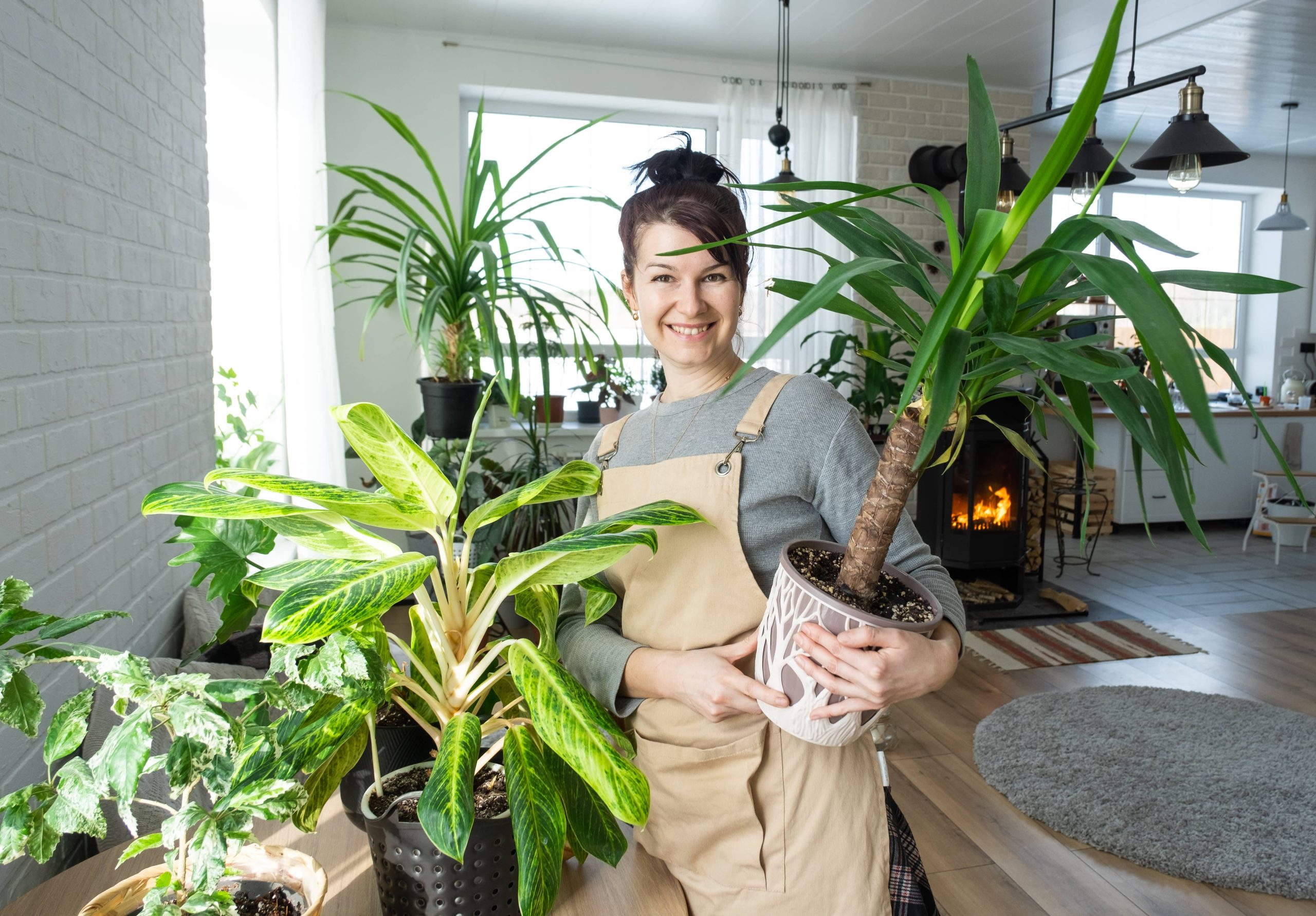
Indoor gardening offers a delightful way to bring nature into your home, enhancing your living space with vibrant colors and fresh scents. Among the many types of houseplants, tropical species are especially popular due to their unique foliage and adaptability. However, one of the most important, yet often overlooked, factors in successful indoor gardening is understanding and maintaining the humidity levels that these plants require. Tropical houseplants, originating from warm and humid regions, have specific humidity needs. Below, we’ll delve into the importance of humidity for these plants and how you can create an ideal environment to help your tropical houseplants thrive.
Why Humidity Matters for Tropical Plants
Humidity refers to the amount of water vapor present in the air. Tropical plants are accustomed to regions with high humidity, typically above 50%. In their natural environment, these plants have adapted to absorb moisture not just through their roots but also through their leaves. Stomata, tiny openings on the undersides of leaves, help these plants manage water vapor exchange and gas exchange.
When indoor humidity drops too low, which can often happen in heated or air-conditioned homes during winter or summer, these stomata work overtime, losing water vapor quickly. This can lead to dehydration and stress, resulting in curled, brown, or crispy leaves. Conversely, excessive humidity can cause other issues such as mold, mildew, and root rot. Hence, finding and maintaining the right balance is critical.
Identifying Humidity Requirements
How do you know what the humidity needs of your particular tropical plant are? Here’s a basic guide to help you get started:
1. Research Specific Plant Needs:
Each tropical plant species can have different humidity tolerance levels. For example, ferns like high humidity, often above 60%, while succulents prefer drier conditions. Understanding the specific needs of your houseplants will guide you in adjusting your home’s environment accordingly.
2. Visual Cues:
Even without precise measurements, your plant can offer hints of its comfort level in its environment. Wilting leaves, increased pest infestations, and brown leaf edges can all signal low humidity issues. In contrast, excessive humidity might manifest as fungal growth or root rot.
3. Use of Hygrometers:
A hygrometer is an affordable and crucial tool for indoor gardeners who want to ensure their plants receive the proper humidity level. Place the hygrometer close to your plant to monitor the surrounding environment continuously.
Methods to Increase Humidity
If you discover your home’s humidity levels are lower than your tropical plants require, there are several ways to increase humidity practically:
1. Misting:
Lightly spraying water onto the leaves can help, but ensure not to overdo it as constantly wet leaves can encourage fungal problems.
2. Pebble Trays:
Fill a shallow tray with pebbles and water and place your plant’s pot on top of the pebbles. As the water evaporates, it increases the local humidity around the plant. This method is handy for smaller plants.
3. Humidifiers:
Investing in a quality humidifier can make a significant difference, especially during colder months when heating systems strip moisture from the air. Pick one that allows you to set specific humidity levels.
4. Grouping Plants:
Creating a group of tropical plants together can elevate humidity because transpiration (the process of water movement through a plant) can benefit surrounding plants, leading to a microenvironment of increased moisture.
5. Bathrooms and Kitchens:
Consider placing humidity-loving plants in these naturally humid areas of your home. Bathrooms, especially, have elevated humidity levels due to daily showers.
Maintaining the Ideal Environment
Creating a stable environment doesn’t end with boosting humidity. Regular care and maintenance routines play a crucial role in ensuring the ongoing health of your tropical houseplants:
– Consistency:
Ensure a consistent humidity level once you achieve the desired range. Fluctuations can stress your plants and lead to unwanted symptoms.
– Proper Air Circulation:
While increasing humidity, don’t forget to maintain good air circulation to prevent stagnant air, which can lead to mold and other issues.
– Watering Regimen:
Adapt your watering schedule according to the humidity levels. High humidity reduces the frequency of watering, as the soil retains moisture longer.
Conclusion
Understanding and regulating humidity is essential for the health of tropical houseplants. As you integrate these steps into your home gardening routine, you’ll provide an environment where your plants can flourish. By carefully monitoring and adjusting humidity levels, you can enjoy the lush beauty and vitality these exotic species contribute to your indoor garden. Whether you’re a novice or an experienced plant enthusiast, mastering humidity control can transform your home into a tropical sanctuary, proving once again that a well-tended plant is indeed a happy plant.













